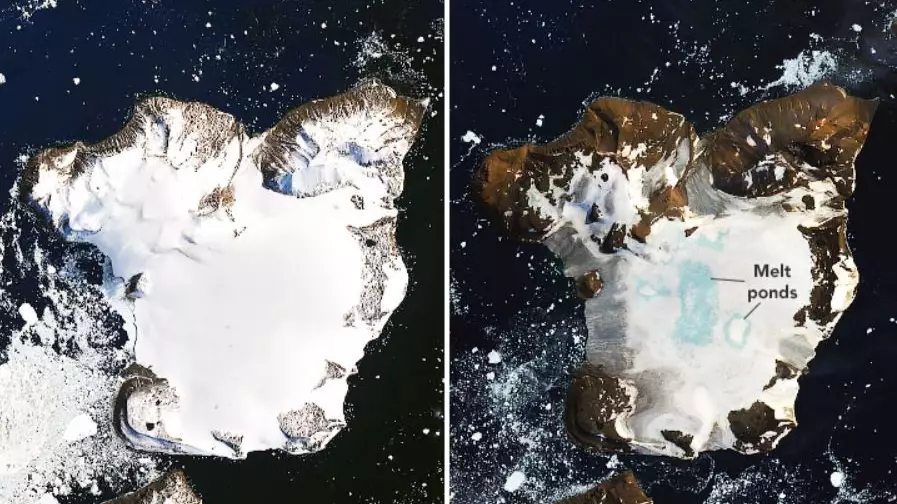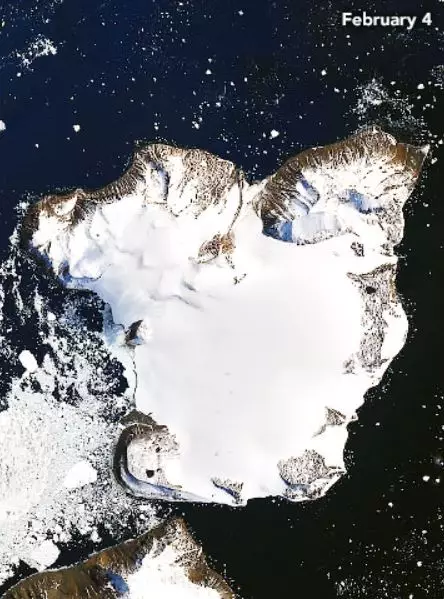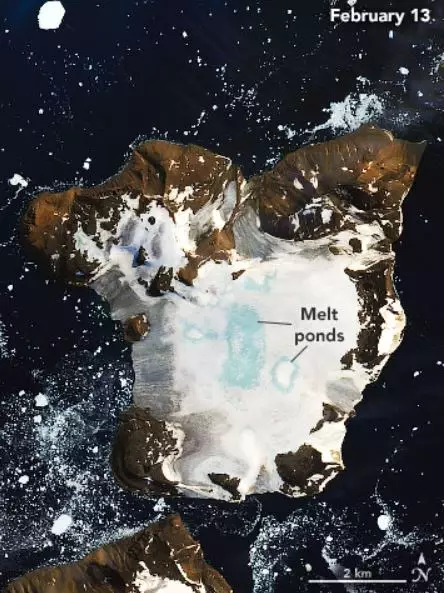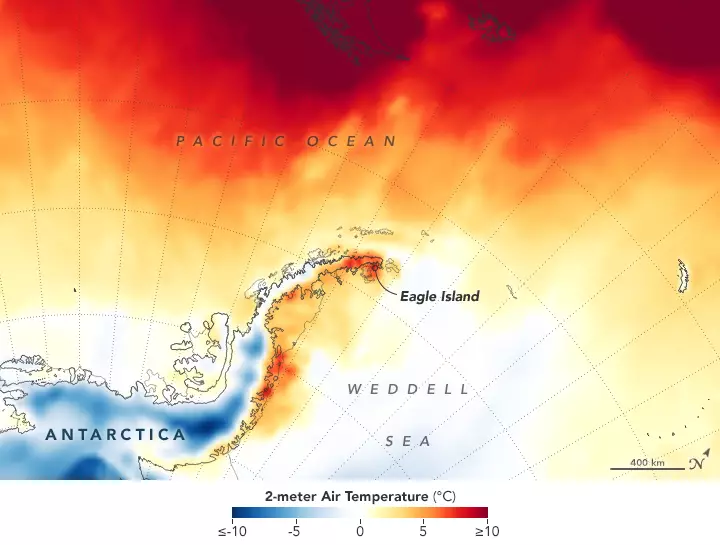
A nine-day record-breaking heat wave in Antarctica caused around 20 percent of its snow to melt.
On 6 February 2020, thermometers at the Esperanza Base on the northern tip of the Antarctic Peninsula reached 18.3°C (64.9°F) - around the same temperature as Los Angeles that day.

This warm spell continued until February 12 2020 and caused widespread melting on nearby glaciers.
Advert
According to climate models, Eagle Island experienced peak melt - 30 millimetres (one inch) - on February 6. In total, snow-pack on Eagle Island melted 106 millimetres (four inches) from February 6 to February 11. This equates to around 20 percent of seasonal snow accumulation in the region that melted in this one event.
Mauri Pelto, a glaciologist at Nichols College, said: "I haven't seen melt ponds develop this quickly in Antarctica. You see these kinds of melt events in Alaska and Greenland, but not usually in Antarctica."
Pelto noted that such rapid melting is caused by sustained high temperatures significantly above freezing. Such persistent warmth was not typical in Antarctica until the 21st century, but it has become more common in recent years.

This February heatwave was the third major melt event of the 2019-2020 summer, following warm spells in November 2019 and January 2020.
Advert
Pelto explained: "If you think about this one event in February, it isn't that significant. It's more significant that these events are coming more frequently."

Meanwhile, over in Alaska, pictures were released that show the Taku Glacier - known as the world's thickest alpine glacier - is now melting.
The glacier, which measures 4,860 feet (1,480 meters) from surface to bed, has been able to withstand the effects of climate change, but the photos show it has lost mass and joined the many other retreating glaciers.
NASA said: "The natural-color images show the glacier on August 20, 2014, and August 9, 2019. The images were acquired by the Operational Land Imager on Landsat 8. Though subtle, the changes are most visible at the boundaries between the glacier and river."
Advert
Mauri Pelto (to the rescue, again) said: "This is a big deal for me because I had this one glacier I could hold on to. But not anymore. This makes the score climate change: 250 and alpine glaciers: 0.
"We thought the mass balance at Taku was so positive that it was going to be able to advance for the rest of the century.
"A lot of times, glaciers will stop advancing for quite a few years before retreats starts. I don't think most of us thought Taku was going to retreat so quickly."
Featured Image Credit: NASATopics: climate change, News